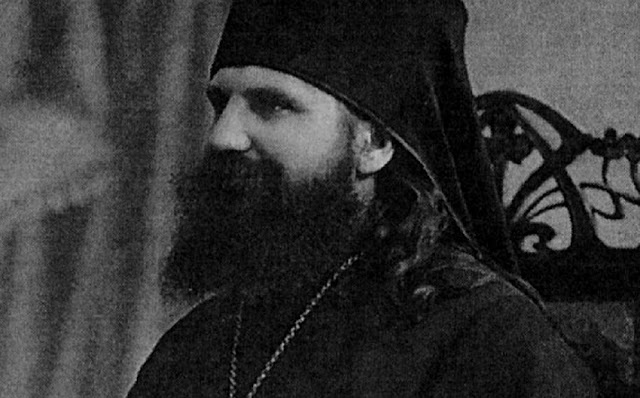
Janis (John) Pommer was born to a peasant family in the district of Vendzen, Latvia in 1876. He had no Russian blood, even though he later showed a great love for Russia. His great-grandfather had been one of the first to accept the Orthodox Faith in this region, and as a result he had been subjected to severe persecution.
At that time there was a great interest in Orthodoxy among the peasants of Lithlandia, thanks to the preaching which had been begun in the Latvian language. The Lutheran pastors, for the most part, looked upon the local inhabitants and their language with disdain. The Latvians, who at one time had been forcibly baptized as Catholics by the German invaders, had also by force become Lutherans after the Reformation following their lords. Those who had gone over to Orthodoxy in the middle of the last century were regarded by the local authorities (the German Barons) as rebels.
In his childhood, Janis helped his parents on the farm and was a shepherd. He was a serious boy, avoiding games, and as a teenager he loved to go into the forest and stay there. His father taught him how to read and write so well that he had entered straight into high school. From his first year in school he was so outstanding that his teachers recommended that he be sent either to the grammar school or to the seminary preparatory school. On the advice of the local priest the boy was sent to the latter. He entered the seminary school in 1887 and in 1891 transferred to the seminary itself in the Latvian capital, Riga. Owing to his success in his studies and his good behaviour, he received a scholarship during his studies. He always spent his summers at home helping his parents on the farm.
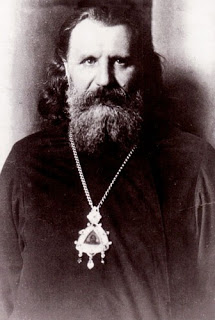
He finished the seminary course in 1897 brilliantly. However, the disorders in Russian educational institutions at that time stopped him continuing his education immediately. For three years he worked as an instructor among the Latvian people, showing great talent as a teacher. In 1900, having passed the entrance examinations brilliantly, he was accepted as a student at the Kiev Theological Academy, again on a scholarship. He was popular among the students, both for his outstanding success in his studies and as a hero in the realm of sports. For those who knew him well, however, the monastic tonsure of the young student in 1901 at St Michael’s Monastery in Kiev, was not unexpected. His companions, even before he was tonsured, used to call him ‘monk’ for his devotion to absolute sobriety and for his continence.
He finished the Academy course in 1904 so brilliantly that he was given a choice between a scholarly career and practical work as a teacher. He chose the latter. As an instructor in the Holy Scriptures at seminary in Chernigov, he inspired his students to such an extent that several of them devoted their lives to the study of the Scripture and later became teachers of this subject. The seminary authorities also valued the work of the young instructor and in 1906 they promoted him to the post of Inspector at the Seminary in Vologda. There Fr John also showed his ability as an administrator. The order which he was able to bring in a very short time to the populous and disordered Vologda Seminary was so exceptional that, despite his youth, in the next academic year he was made Rector of the Orthodox Seminary of Lithuania and Superior of the Holy Trinity Monastery of Vilna. He was also given assignments in the diocesan administration. Therefore, his transfer in 1911 to Minsk, where the ailing Archbishop Michael of Minsk had called him to the post of vicar bishop, was met in Vilna with universal regret. On his way to Minsk he participated in the canonization of St. Joasaph of Belgorod.
In 1912 Bishop John was transferred to Odessa as a vicar of the Archbishop of Cherson, Dimitri, who was then very old. With the new year of 1913 he was given the task of establishing the new diocese of Priyazovsk. His relationship with the local inhabitants here was so good that this diocese became the only one in Russia in which his salary and that of his clergy was taken by the local people on themselves. During his four years as head of this diocese, which embraced a mining district, the energetic pastor visited all its corners. There were occasions when the Bishop was chosen as arbitrator when there were conflicts between the workers and the employers. The workers considered him the defender of their interests, and the employers submitted to his decisions without discussion. When, in connection with the War, waves of refugees from Galicia and Czechoslovakia reached the area, they found in Bishop John one who took great care for their needs. Many refugee schools and orphanages were organized with his participation. Hundreds of grateful Galicians and Czechs became Orthodox, including the intelligentsia.
The Revolution found Bishop John in this post. He was dangerous to the revolutionary leaders, and a campaign began against him immediately. Both open and secret revolutionary agents followed him everywhere. Meanwhile, among the masses of people who were entirely devoted to their bishop, an attitude formed that was not acceptable to the local revolutionary authorities. Volunteers from among the workers and the soldiers organized a guard who watched over the bishop day and night. On his way to and from services he was accompanied by masses of people who were prepared to defend their bishop against enemies.

The local revolutionary authority thought that it had found a way out by arranging the transfer of the beloved Archpastor to the diocese of Tver. But after the final
service in the Cathedral, the people returned their bishop by force to the episcopal residence and surrounded him with guards who were to prevent the departure or abduction of the bishop. Under such conditions the humiliated authorities asked the bishop to leave the city and go to Moscow. However, together with Bishop John a delegation from the people went to Moscow, representing the clergy, laymen, soldiers and cossacks, intending to protest against the actions of the local authorities. In Moscow the delegation obtained its end with a favourable decision from both the secular and the Church authorities. However, the Bolshevik coup and the beginning of the Civil War made the return of Bishop John to Priyazov impossible. Accordingly, he was assigned as Archbishop of Penza.
In Penza, where Archbishop John arrived at the beginning of 1918, the believers immediately undertook the defence of their Archpastor from both the secular authorities and the Church modernists. Again a volunteer guard was formed. The local Secret Police immediately subjected the Archbishop to search and interrogation, but neither gave any reason for arrest. Then the Police decided to mark the celebration of Easter 1918 with the murder of Archbishop John.
On Easter Eve there appeared at the Archbishop’s residence in the Transfiguration Monastery two agents, the former officer Rudakov and the worker Dubovkin, and they began to demand access to him. The guard sounded the alarm to warn the people and Dubovkin fled, but Rudakov broke down the door of the cell and fired several shots which, fortunately, went wide of the mark. The Archbishop succeeded in disarming him. The people who had by this time gathered intended to take care of the criminal by lynch law and only the energetic intercession of the Archbishop saved Rudakov from certain death. And here a miracle occurred: Rudakov, who had just made an attempt against the life of the Archbishop, threw himself on his neck with the Easter greeting, ‘Christ is risen!’
Naturally, the authorities were swift to deny taking part in this matter, despite the fact that Rudakov had a written order on him. The unfortunate man was arrested and soon died in prison. Bright Week in Penza, and all over the diocese, turned into an unheard of demonstration of love and devotion of the faithful for their shepherd. The authorities, calculating the situation, hid for a while and refrained from taking any open steps. The faithful, including even the liberal circles of the local intelligentsia, grouped even more tightly around their Archpastor. The important local lawyer, V.A. Bemnov, the Archbishop’s legal advisor, became the head of these zealots and was his subdeacon. Church life revived and strengthened in the whole diocese.
In May 1918 the Bolsheviks, for no reason, opened artillery fire on the Transfiguration Monastery. The place where the Archbishop was living became the centre of fire. Later the authorities explained this incident as a misunderstanding, but the local people accepted this as an attempt against the life of their Archpastor and they protested. On 7 September 1918, the local Secret Police again made a long search of the Archbishop’s cell and office. Even though nothing incriminating was found, agents took the Archbishop to prison. This made the Archbishop late for the Vigil of the Nativity of the Mother of God. When the believers found out that the Archbishop had been taken to the ‘house of no return’ on the day when executions were performed, those who had come to the service decided that the Archbishop had been shot together with the other condemned. Thus when Archbishop John returned very late to the Cathedral, instead of the Vigil he found in progress a requiem service for himself.
As its next provocation the authorities made use of the local representative of the ‘New Church’, V. Putyatu-Gruenstein, who, on September 14, appeared at Sts. Peter and Paul Church with his followers, while Archbishop John was celebrating. They attempted to enter the church but the people prevented this. Because of the disorder around the church the Archbishop was imprisoned by the local Secret Police. He was kept in prison for a whole month despite his obvious innocence. From one day to the next the local Police were besieged by delegations of the faithful demanding the release of the Archbishop. Prayers were offered in the whole diocese for this. All of this made the Secret Police stop their case against the Archbishop. At midnight on 14 October the agents began to call the prisoners, one by one. It was a Saturday, the day on which executions were usually performed. Those who were called went out and did not return. They were handed over to the executioners at once. On the long list of the doomed, Archbishop John was the very last. This was a subtle torture: he had to suffer everything that is suffered by those who are condemned to death. About one o’clock in the morning he was finally informed that he had been freed.
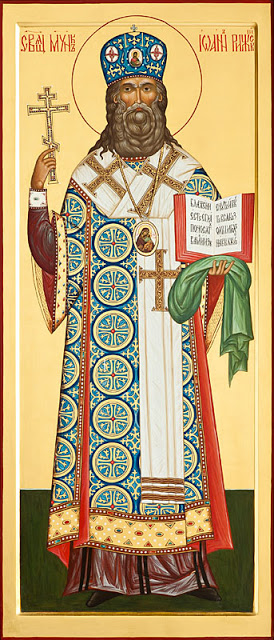
On 18 July 1919, the authorities called the Archbishop to the military headquarters, where he was examined and pronounced fit for military service, being assigned to a regiment in the rear. A postponement of this was won, thanks only to the intercession of the faithful. When, at the end of 1919, White troops began to draw near to Penza, the authorities hastily arrested the main Church people. On 11 November Police agents conducted a new search of the Archbishop’s cell, this time an especially careful one. Although nothing was found, the Archbishop was again arrested.
The Secret Police declared that a mythical counter-revolutionary organization had been discovered, the members of which were immediately executed. Bezsonov, the Archbishop’s subdeacon, was among them. In reply to the categorical protest of the Archbishop, he was sent to Moscow where his case was to be examined. His case was taken by the Chairman of the Secret Operations Division of the Secret Police, the notorious Latsis (a fellow-countryman of the Archbishop, who was eventually to perish himself in the underground rooms which he knew so well). This time the Archbishop was imprisoned for three months. The agents did not manage to collect or fabricate any incriminating material at all and he was released on 11 March 1920.
On 3 February 1920 Archbishop John was elected by a Council of the Latvian Orthodox Church as Archbishop of Riga and All Latvia. Latvia, which until the Revolution had been a part of the Russian Empire, had suffered greatly from the effects of the First World War and the disorder in Russia. Already on 14 January 1919, Archbishop Platon of Revel had died a martyr’s death in neighbouring Estonia. Although the Communist threat receded for some two decades from the Baltic countries, still the Orthodox Faith in newly-independent Latvia was looked on by the government as something which had outlived its time and was now superfluous.
The Cathedral of Riga, which under the German occupation had been turned into a Lutheran church, and had then twice been damaged in military action, was returned to the Orthodox, but since it was a reminder of Russian rule it now stood sealed. The bishop’s residence and St. Alexis Monastery had been given to Roman Catholics, and other Church properties had been confiscated by the government and turned to secular uses. Orthodox not only in Riga but also in all the cities and towns of Latvia, found themselves in terrible conditions, without a shepherd, persecuted, totally without rights. A systematic attempt was being made to uproot the Orthodox Faith. Under these painful conditions, the Latvian Orthodox could have done no better than to choose as their Archpastor Archbishop John, who was not only the most eminent Orthodox Church figure of Latvian blood at that time, but also a man of great courage and decisive action.
At the repeated request of the Latvian Orthodox Church, on 14 April 1921, Patriarch (later St) Tikhon blessed Archbishop John to go to Latvia, but on 23 May he changed his decision at the request of the clergy and faithful of Penza. Only on 19 July 1921, ‘in view of the importunate request of the Latvian Church’, did the Patriarch give his final agreement for Archbishop John to leave, expressing his gratitude for his self-denying and fruitful labour for the good of the Church. Before Archbishop John’s departure, Patriarch Tikhon, in agreement with the decree of the Holy Synod and the Higher Church Council, granted Archbishop John the widest canonical autonomy to govern the Latvian Orthodox Church. This act of confidence was completely justified by the further activity of Archbishop John, who in his martyr’s death was to follow in the steps of the Patriarch.
On 24 July 1921, the Orthodox clergy and people, carrying crosses and sacred objects from all the Orthodox churches, met Archbishop John at the railway station in triumph and took him to the Cathedral Church. Even while the Archbishop was celebrating his first service here (where an Orthodox bishop had not celebrated since 1917), the local Orthodox leaders had no idea where he was going to live, since the bishop’s residence had just been seized by the government. But at the end of the service, after blessing the people, to the astonishment of everyone present, the Archbishop went to the basement of the Cathedral and said: ‘I will live here’. Thus he testified to the persecution of the Latvian Church and made the Cathedral the centre of his unrelenting battle to restore the rights of the Orthodox Church in Latvia. In the campaign that followed in the Latvian government and press to demolish the Cathedral, the fact that Archbishop John himself lived there was a decisive factor that prevented the realization of this project.
The arrival of Archbishop John was the beginning of a new era in the life of the Latvian Orthodox Church. His first appeal to the Latvian government was met with the cold reply: ‘The laws of Latvia know neither the Orthodox Church nor its organs and organizations and do not oblige the Latvian government to defend the Orthodox Church’. Soon, however, Archbishop John succeeded in obtaining the promulgation of a law concerning the Orthodox Church in Latvia which regulated the relation between the Church and the State and secured for the Church a number of rights, in particular obtaining considerable sums of money from the government.
A stop was put to the senseless destruction of Orthodox holy objects, such as the removal of the chapel from the main railway station in Riga. Orthodox parishes began strengthen and the churches which had been destroyed in the War were restored. From the very beginning Archbishop John was the head of all the Orthodox Christians in Latvia, both Russians and Latvians, and it was thanks
only to his unquestioned authority, mind, experience, and subtle tact that they avoided the terrible division which prevailed in the other Baltic States between Russians and the local inhabitants. This Latvian by birth, with a Russian soul, was a bridge between the two peoples and both considered him their own.

From 1925 on Archbishop John became the representative of the Russians of Latvia in Parliament. From this moment his activity took on enormous dimensions. He opened an Orthodox seminary, property was restored to churches, and finally, he managed to obtain the return from the Soviet Union of holy objects and property for great sums of money. Orthodox Latvians, who before Archbishop John’s coming had largely concealed themselves, now stepped out boldly behind their fearless leader, and the Latvian Church experienced the best years of its brief existence. In a few years, according to official statistics, the Orthodox population increased by twenty per cent, thirteen new churches were built and consecrated, and four others were under construction, with still others being planned, when Archbishop John was martyred.
The situation of the Latvian Orthodox Church in the first years after the First World War and the Russian Civil War was, of course, difficult; but incomparably more difficult was the situation of Orthodox believers in Russia. Archbishop John successfully fought against his local enemies, the Latvian Communists, but neither did he forget his chief enemies, the Bolsheviks. And so it was that a regular campaign of lies and slanders was started against Archbishop John. The campaign was systematic and well-planned; when one lie was exposed, a new slander would immediately be invented. However, lies were exposed, and Archbishop John was also shown to be the benefactor of many non-Orthodox people. He was truly the father of his flock.
In the last years Archbishop John suffered much from the so-called ‘Russian Christian Movement’. Archbishop John himself loved children and young people very much and was glad to see representatives of the youth, and it was not rare that groups and even whole classes of students, would visit him (for in Riga at that time there were more than a dozen Russian primary schools and several grammar schools). At first Archbishop John was very sympathetic to the newly-formed Movement, but with time, when the nature of this organization became clear, he had nothing more to do with it. His reputation among ‘liberal’ religious groups was likewise not helped by his friendly relations with the Synod of Russian Bishops Outside Russia, even though for political reasons he could not be a part ofthem. In 1931, on the tenth anniversary of Archbishop John’s episcopate in Riga, the great Metropolitan Anthony of the Russian Church Outside Russia, was to call him ‘a courageous defender of Orthodoxy’.
Archbishop John’s political enemies did not hesitate to send hooligans to attack him. Once, when he was returning in the evening to his summer residence outside of town, hirelings were supposed to beat him mercilessly, but instead, miscalculating the physical strength of their victim, they were mastered by him. To begin with, the Archbishop knocked their heads together. But then he took them home, spoke to them from the heart, and had such an effect on them that they repented of everything before him and became his friends.
In the life of Archbishop John there were some circumstances which for a while were enigmatic. His slanderers for a long time reproached him for the fact that he lived alone, without a cell-attendant. ‘He is afraid of witnesses’, they said, repeating the slanders which were spread about him. But when his well-wishers asked him about this, he replied that it was better for him to live alone. Various people came to him and, besides this, he did not want to subject anyone to danger. The meaning of these words became clear only after his martyr’s death. Indeed, people of all sorts would go to see the Archbishop. Famous foreign prelates would come, and also poor people and ragged creatures.
Archbishop John conducted an inspired, ceaseless and completely open battle against the atheist regime in Russia. No matter where he might speak (as a Member of Parliament, before Russian organizations, and most of all in Church), everywhere his powerful and bold voice sounded forth fearlessly, imploringly and loudly, like an alarm bell. He was an inspired preacher; he spoke simply
and briefly. In fact he would have preferred a solitary life in some quiet monastery cell, giving himself over to spiritual labours; but the times would not allow this. Anyone who ever saw the Archbishop in the garden of his summer residence, near the beehives, or working at his carpenter’s bench, knew that such occupations were not foreign to him.
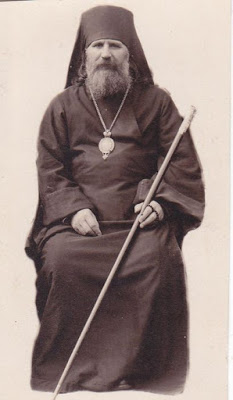
A good example of Archbishop John’s fearless expression of the truth is to be seen in his sermon in the Riga Cathedral on Great Friday 10 April 1931. For him it was not possible to separate the Golgotha of Christ our Saviour and the Golgotha of the contemporary Orthodox Church. Standing before the Holy Shroud of Christ, the bishop’s flock did not escape reality, but was told how to understand the terrible reality of these days, and how to be victorious in its midst:
‘Of Joseph of Arimathea it is said that he was a disciple of Christ, but secretly, for fear of the Jews. In this respect he is not an example for us. To hide one’s faith out of fear is not a work worthy of respect. If you really fear God, you will no longer fear anyone else at all. Stand for Christ and He will stand for you. Lukewarmness must be cast out of oneself and out of others. The fear of men is the weeds on the spiritual field which are to be uprooted.
Joseph of Arimathea followed Christ from afar, secretly. Oh, if only this would serve as a warning for all those who in our time also hesitate to confess Christ openly. Renounce the evil counsels of the world and the flesh! Forward for truth, righteousness, and the Lord!
But perhaps someone will say: the time when Joseph lived and acted was different from our time. O my contemporary friends, either you actually do not see, or else in a cowardly manner you pretend not to see that our present reality, both in word and in deed, has far surpassed all that measure of evil deeds which forced Joseph to cease his concealment and come out into the arena of open confession of Christ.
Anyone who follows the contemporary press and the contemporary platform knows that the contemporary mockery of Christ has incomparably surpassed both in its malice and in its crudeness all the mockeries which the contemporaries of Christ cast on Him up to Golgotha and on Golgotha. The person of Christ, and the teaching of Christ, and all the works of Christ, and His whole work in general have been subjected to the crudest and most shameful mockery. If the present-day enemies of Christ could obtain the Body of Christ which was crucified on Golgotha, it would again be subjected to the most refined torments, the most subtle means of torture to death. But the Body is not available to them, and so the enemies of Christ exhaust themselves in tortures and crucifixion of the Body of Christ which is on the earth, and is called the Church of Christ. Recall what you have seen, heard, and read about the torture of the Body of Christ, the Church, within the boundaries of Bolshevism, and even in the incompleteness of our information you will understand that the demon of Golgotha is a child by comparison with the Soviet demon.
Yes, our time is not like the time of Joseph of Arimathea. It is incomparably more evil and cruder than that time. If Joseph found in the evil deed of Golgotha sufficient inspiration to be converted from secret confession to open confession, then our time should be considered as one that calls us to a loud confession joined to a clearly expressed protest against the raising upon Golgotha not only of God, but also of man. At the mouth of the river Thames, at one of the points which juts out and marks a dangerous shallow, there has been placed a bell which by its ringing during storms warns sailors against the mortal danger. The fiercer the storm, the sharper and more powerful its ring. At the present time of storm and darkness, when the shallow of Bolshevism has spread across the whole face of the earth as a deliberate trap, every soul must take upon itself the role of this bell which warns and saves. They are deeply mistaken who consider this danger to be local. And even a danger of a purely local character cannot be a matter of indifference for a Christian, but the present Bolshevik danger of which we are speaking has the intensified aim of becoming universal. Therefore the bell of alarm at the present time should be sounded across the whole face of the earth, to warn everyone everywhere.
No concessions to the enemy! Give him an inch and he will take a mile; give him a finger and he will take the whole arm.
When we entered the Church of Christ by the gates of Holy Baptism, of us was demanded the confession of faith in God in accordance with the teaching of the Holy Church. But also, three times we were asked: ‘Do you renounce Satan and all his works and all his angels and all his service and all his pride?’ And three times we replied: ‘I renounce them’. Again three times we were asked: ‘Have you renounced Satan?’ And we replied three times: ‘I have renounced him’. When in later life it comes to confessing the faith, usually this part of the confession is forgotten. At all times this is bad, but at a time of intense battle between the Kingdom of God and the kingdom of Satan, such forgetfulness is intolerable.
For the infirm human consciousness there is born the temptation that supposedly one may confess God and at the same time keep a neutral position, a kind of loyalty with regard also to the kingdom of Satan. There is created thus a kind of double citizenship. But upon all of us there lies a double responsibility: on the one hand, to kindle in oneself and in others an active love for the Kingdom of God, and on the other hand to kindle a no less active hatred for the kingdom of the devil.
The Lord is the same yesterday and today and forever. When the shame of godlessness and impiety now presses upon the children of the new Israel, Holy Russia, somewhere in the plains of Russia, or in the Siberian forests, or in some one of the lands of exile and diaspora of the great God-bearing people, there is already being prepared a grace-given field which will cause to spring up a chosen one of God for the deliverance and rebirth of the God-bearing people. There are no more leaders, and pastors are in straitened conditions. The human eye does not see from where deliverance might come; but the All-knowing Lord knows this. The Lord, by ways known to Him alone, will raise up suitable men at a suitable time. Of this we can and must be convinced’.
Like only a few other non-Russians, Archbishop John felt deeply Russia’s tragedy deeply and saw the significance of Orthodox Russia for the whole world.
The generally accepted version of the Archbishop’s death, which was confirmed by the brother of the reposed, Anton Pommer, is as follows:
The Archbishop had been called in the evening by Sobinov, the famous singer from Russia, who was passing through Riga; he was an old friend of the Archbishop’s, such a one as the Bolsheviks once in a while allowed to go abroad. It was agree that he would go to the Archbishop in the evening. The latter opened the door to him and let in his murderers. Sobinov himself died under mysterious circumstances at this very same time.
The story went that firemen, who had been called by neighbours at about two o’clock in the morning, found a frightful disorder in the Archbishop’s residence: cupboards and drawers had been thrown open, the office had been ransacked, furniture had been overturned. The Archbishop had evidently been wounded in the hall, on the lower floor, and had been carried to the attic on a ripped-off door. There, in the workshop, he had been tied to the carpenter’s bench and, doused with kerosene, had been set on fire. An examination of the lungs revealed that he had still been alive at this time, for there was smoke inside them. There was evidence that he had been tortured. Both stoves in the hall were burning, and some kind of papers had been burned in them. It is known that he had papers proving the treasonable activity of the Latvian Communists.
This crime was never explained, at least officially. It was probably the only unsolved crime of this sort for the whole period of the existence of independent Latvia. Every child in Latvia knew who the true inspirers of this crime were, but there were no official accusations: the trail led to the Soviet Embassy. The press did not write about this; the shadow which the mighty and cunning neighbour threw upon the small land of two million people was too ominous. But the whole country knew the truth. The crime occurred in the night between Thursday and Friday on 12 October 1934. The Archbishop was in the full flower of his life and activity and not yet sixty years old. He was the most outstanding figure in the Church life of the Baltic countries.
At the funeral the whole city was in mourning. More than 100,000 people were in the streets – about a quarter of the whole population of the city. In the Cathedral, from the bishop’s place to the Altar, there were rows of priests, fifty on each side. Everyone followed the coffin. A huge crowd lined the way from the Cathedral to the cemetery, several miles away. In this there was a kind of demonstration, a challenge to the unpunished murderers. Soon a small chapel was raised over the grave, a miniature replica of the bell-tower of the Cathedral. In the former residence of the Archbishop the basement of the Cathedral, a corner was devoted to his memory, with the bench on which he had been burned. A vessel containing a few drops of his blood was walled up in the Cathedral and an inscription made on a marble plaque. And here, every Thursday (the day of the murder), a requiem service was celebrated, until eventually the Truth and the Light conquered, the Lie and the Darkness were defeated and Archbishop John was canonized in triumph as a saint of God.
Holy Father John, Pray to God for the Land of Latvia and all Thy People!
 Janis (John) Pommer was born to a peasant family in the district of Vendzen, Latvia in 1876. He had no Russian blood, even though he later showed a great love for Russia. His great-grandfather had been one of the first to accept the Orthodox Faith in this region, and as a result he had been subjected to severe persecution.
Janis (John) Pommer was born to a peasant family in the district of Vendzen, Latvia in 1876. He had no Russian blood, even though he later showed a great love for Russia. His great-grandfather had been one of the first to accept the Orthodox Faith in this region, and as a result he had been subjected to severe persecution. He finished the seminary course in 1897 brilliantly. However, the disorders in Russian educational institutions at that time stopped him continuing his education immediately. For three years he worked as an instructor among the Latvian people, showing great talent as a teacher. In 1900, having passed the entrance examinations brilliantly, he was accepted as a student at the Kiev Theological Academy, again on a scholarship. He was popular among the students, both for his outstanding success in his studies and as a hero in the realm of sports. For those who knew him well, however, the monastic tonsure of the young student in 1901 at St Michael’s Monastery in Kiev, was not unexpected. His companions, even before he was tonsured, used to call him ‘monk’ for his devotion to absolute sobriety and for his continence.
He finished the seminary course in 1897 brilliantly. However, the disorders in Russian educational institutions at that time stopped him continuing his education immediately. For three years he worked as an instructor among the Latvian people, showing great talent as a teacher. In 1900, having passed the entrance examinations brilliantly, he was accepted as a student at the Kiev Theological Academy, again on a scholarship. He was popular among the students, both for his outstanding success in his studies and as a hero in the realm of sports. For those who knew him well, however, the monastic tonsure of the young student in 1901 at St Michael’s Monastery in Kiev, was not unexpected. His companions, even before he was tonsured, used to call him ‘monk’ for his devotion to absolute sobriety and for his continence. The local revolutionary authority thought that it had found a way out by arranging the transfer of the beloved Archpastor to the diocese of Tver. But after the final
The local revolutionary authority thought that it had found a way out by arranging the transfer of the beloved Archpastor to the diocese of Tver. But after the final On 18 July 1919, the authorities called the Archbishop to the military headquarters, where he was examined and pronounced fit for military service, being assigned to a regiment in the rear. A postponement of this was won, thanks only to the intercession of the faithful. When, at the end of 1919, White troops began to draw near to Penza, the authorities hastily arrested the main Church people. On 11 November Police agents conducted a new search of the Archbishop’s cell, this time an especially careful one. Although nothing was found, the Archbishop was again arrested.
On 18 July 1919, the authorities called the Archbishop to the military headquarters, where he was examined and pronounced fit for military service, being assigned to a regiment in the rear. A postponement of this was won, thanks only to the intercession of the faithful. When, at the end of 1919, White troops began to draw near to Penza, the authorities hastily arrested the main Church people. On 11 November Police agents conducted a new search of the Archbishop’s cell, this time an especially careful one. Although nothing was found, the Archbishop was again arrested.
 A good example of Archbishop John’s fearless expression of the truth is to be seen in his sermon in the Riga Cathedral on Great Friday 10 April 1931. For him it was not possible to separate the Golgotha of Christ our Saviour and the Golgotha of the contemporary Orthodox Church. Standing before the Holy Shroud of Christ, the bishop’s flock did not escape reality, but was told how to understand the terrible reality of these days, and how to be victorious in its midst:
A good example of Archbishop John’s fearless expression of the truth is to be seen in his sermon in the Riga Cathedral on Great Friday 10 April 1931. For him it was not possible to separate the Golgotha of Christ our Saviour and the Golgotha of the contemporary Orthodox Church. Standing before the Holy Shroud of Christ, the bishop’s flock did not escape reality, but was told how to understand the terrible reality of these days, and how to be victorious in its midst: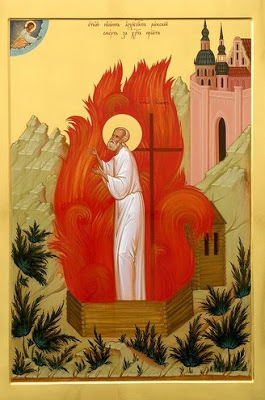


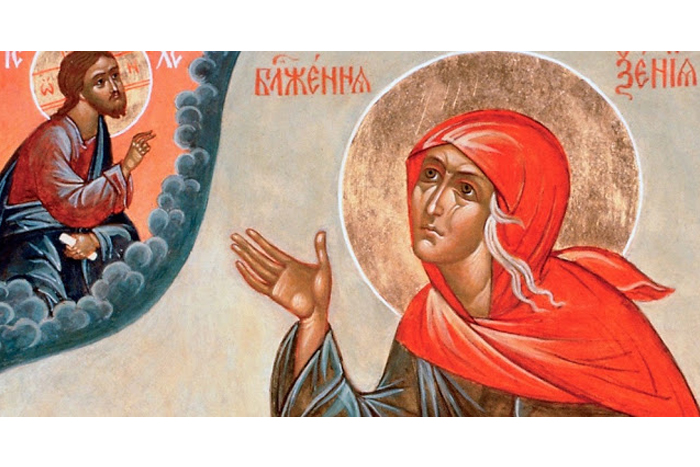
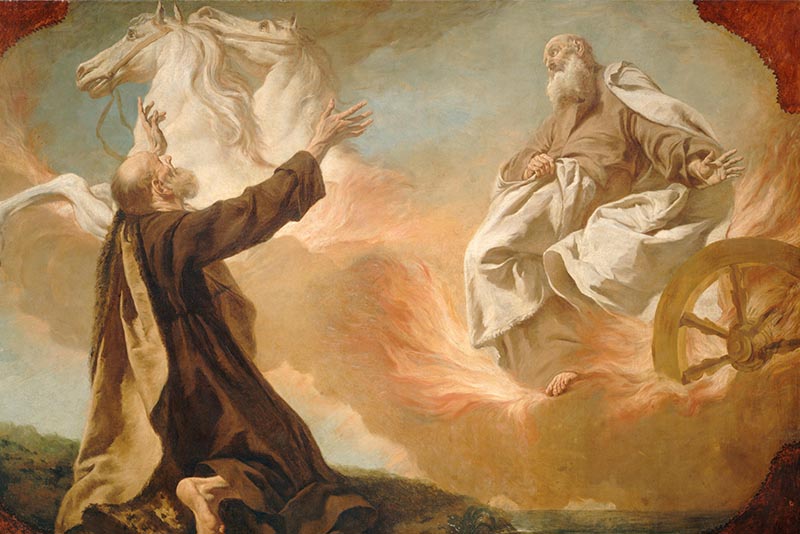

Comments